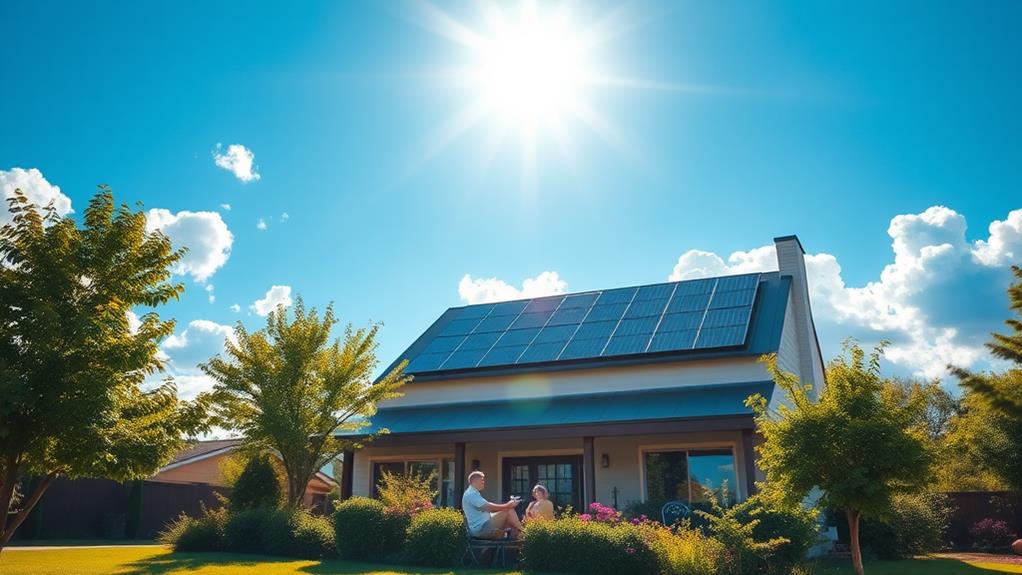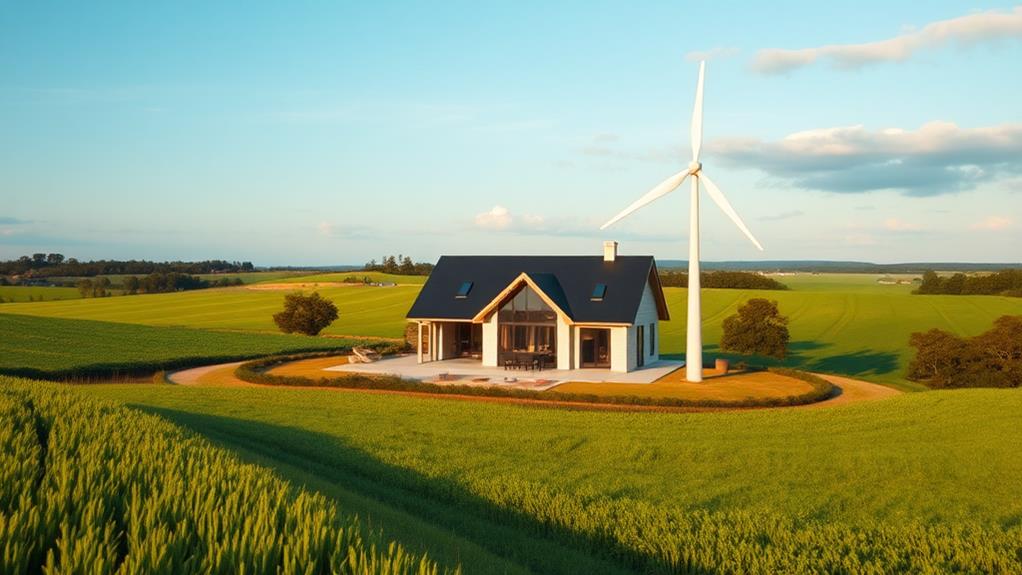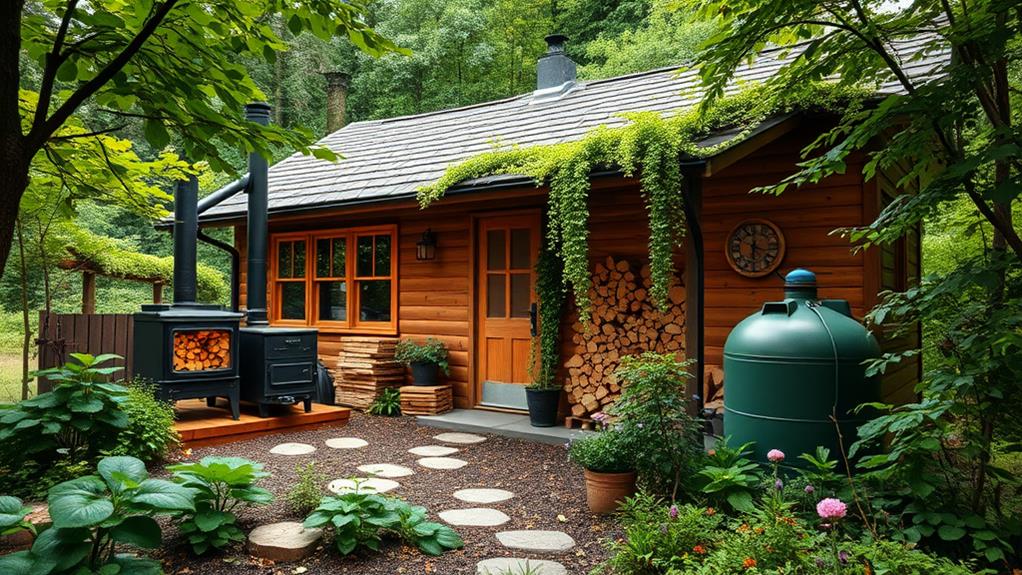When we consider the three best geothermal heating systems for our homes, we identify Horizontal Closed-Loop, Vertical Closed-Loop, and Pond/Lake Closed-Loop systems. Horizontal systems, ideal for larger properties, involve burying pipes in trenches at least 4 feet deep and range in installation costs from $10,000 to $30,000. Vertical systems cater to limited spaces, utilizing drilled holes up to 400 feet deep, with U-shaped connections enhancing heat transfer. Finally, Pond/Lake systems are advantageous for homes near water bodies, coiling pipes below the surface to maximize temperature differentials. Each system's unique specifications and applications greatly influence efficiency, which we can explore further.
Key Takeaways
- Horizontal Closed-Loop Systems are cost-effective for suburban homes with ample land, offering efficient heating in moderate climates.
- Vertical Closed-Loop Systems are ideal for properties with limited space, utilizing deep drilled holes for reliable performance in diverse climates.
- Pond/Lake Closed-Loop Systems leverage nearby water bodies for heat exchange, reducing excavation and enhancing efficiency with stable water temperatures.
- Consider installation costs, as Horizontal systems range from $10,000 to $30,000, while Vertical systems incur higher drilling expenses.
- Evaluate soil, land space, and water body characteristics to determine the best geothermal system for your specific home needs.
Horizontal Closed-Loop Systems
When considering geothermal options for our homes, horizontal closed-loop systems often come to mind. These systems, ideal for suburban areas with ample land, involve burying pipes in trenches at least four feet deep, providing a cost-effective heating and cooling solution. Installation costs typically range from $10,000 to $30,000, depending on local market conditions and specific site characteristics. Utilizing either a two-pipe system or the Slinky™ method enhances heat exchange efficiency, maximizing energy efficiency. However, their effectiveness heavily relies on soil conditions; they perform best in moderate climates with well-draining soils. By opting for horizontal closed-loop systems, we're choosing an eco-friendly approach to geothermal systems that can considerably lower our carbon footprint while ensuring comfort in our homes.
Vertical Closed-Loop Systems
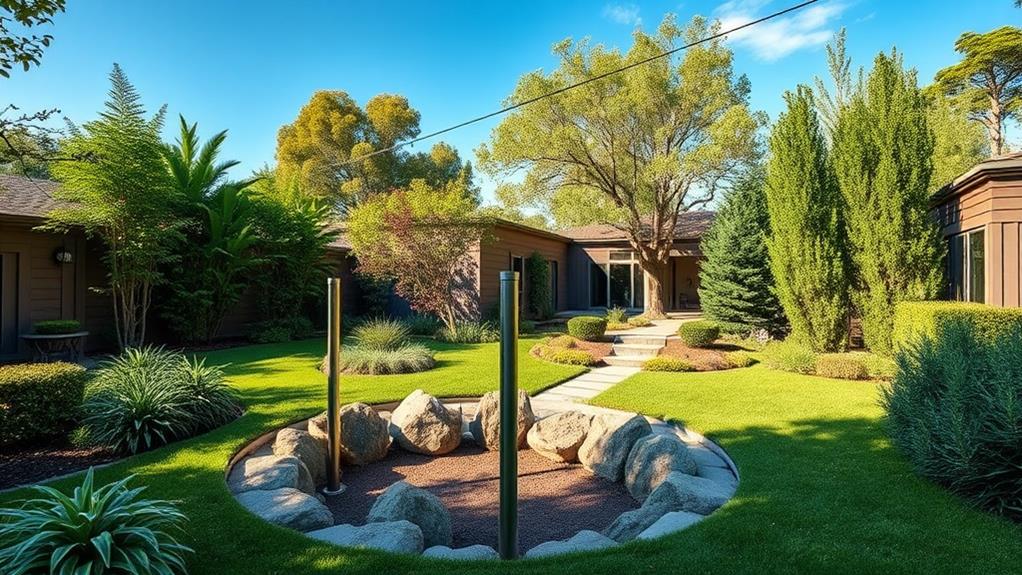
For many homeowners with limited yard space, vertical closed-loop systems present a practical geothermal heating solution. These systems install pipes in drilled holes, spaced 20 feet apart, reaching depths up to 400 feet. This design is particularly advantageous for smaller lot sizes or areas with shallow subsoil. The U-shaped bottom connections enhance heat transfer efficiency, allowing for optimal functioning in both heating and cooling applications. Despite higher installation costs due to drilling, the compact nature of vertical installations minimizes land disturbance, making them ideal for densely populated urban areas. Additionally, their reliance on stable underground temperatures guarantees that vertical closed-loop systems remain energy efficient and effective across various climates, providing reliable geothermal heating year-round.
Pond/Lake Closed-Loop Systems
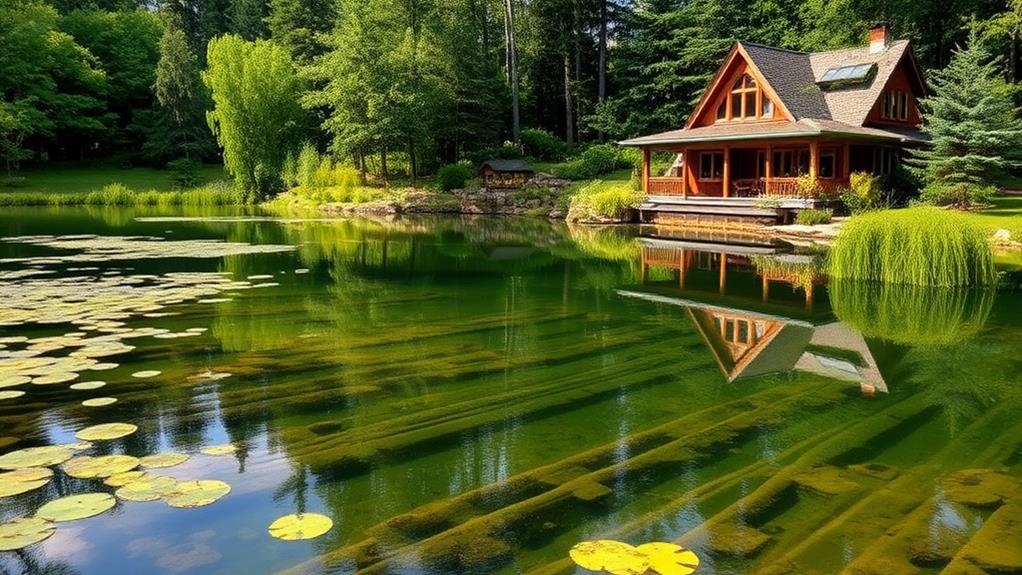
Many homeowners find pond or lake closed-loop systems to be an excellent option for geothermal heating. These systems utilize adjacent water bodies for heat exchange, with pipes coiled at least eight feet below the water surface, preventing freezing while ensuring effective heat transfer. They require reduced excavation needs compared to other geothermal systems, making them ideal for properties with ponds or lakes. The temperature differentials between air and water provide enhanced efficiency for both heating and cooling throughout the year. By leveraging the stable temperatures of the water body, we can achieve substantial energy savings, maintaining comfortable indoor conditions. However, a proper assessment of water volume, depth, and quality is essential for peak performance and longevity of these systems.
Frequently Asked Questions
What Is the Best Type of Geothermal System?
When considering geothermal system types, we should explore closed loop systems, like vertical and horizontal loop systems, or even pond loop systems. Open loop or hybrid systems might fit, but installation and maintenance requirements matter too!
Is Residential Geothermal Worth It?
Did you know geothermal systems can boost energy efficiency by over 530%? We believe the cost savings, government incentives, and long system lifespan make them worth it, enhancing our property value while caring for the environment.
What Is the Downside of Geothermal Home Heating?
When considering geothermal heating, we should weigh the high installation costs, maintenance requirements, and installation complexity against the benefits. Land availability, zoning regulations, and potential noise levels can impact our decision too.
What Is the Most Efficient Geothermal Loop System?
When we consider efficiency in geothermal loop systems, vertical loops often stand out. However, horizontal and pond loops also have their merits. Ultimately, the best choice depends on our local climate and installation constraints.


